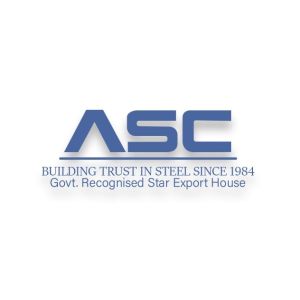How long will Corten Steel last?Posted by Deepak Sheth on February 2nd, 2023
Thicknesses of the modest specification [2.0mm or 3.0mm] are perfectly fit for purpose for + 25 years of longevity in most environments/applications. An additional 1.0mm thickness is needed to mitigate the forecast material loss over a 40-year lifespan. The majority of weathering steel types require cycles of wet and dry weather to develop and oxidize. The protective rust provides corrosion resistance, so Corten steel last can last for a few decades to over 100 years. Speaking of Corten Steel, specialized Corten Steel is used for proper functioning. Cortensteeltube.com Is one leading Manufacturer, Supplier & Stockist Of Corten Steel ASTM A423 Grade 1 Tubes. The weathering steels, known by their trademark COR-TEN steel, are a series of steel alloys that have been developed to eliminate the need for painting and form a stable rust-like appearance if exposed to the weather for several years. All of these heat-treating processes involve heating and cooling steel. The temperature and rate at which the corten steel last is heated and cooled, as well as the final results, vary. A steel’s heat treatment typically involves (i) annealing, (ii) normalizing, (iii) hardening, and (iv) tempering. Annealing The process involves heating and cooling steel. It is often used to soften steel. A variety of annealing processes are described below. The temperature and cooling rate vary depending on the type of steel and the purpose of the treatment. They can also be used to modify mechanical or physical properties, create a specific microstructure, or remove gases from steel. Spheroidizing In spheroidizing, steel is heated and cooled to form a globular or rounded form of carbide in a ferrite matrix. Generally, the process takes place by heating it for a prolonged period of time just below the A1 temperature, but it can also be accomplished by alternately heating it to a temperature just above the A1 temperature and cooling it to a temperature just below the A1 temperature. It is important to keep the temperature just below the critical temperature at the end of the process. The initial structure affects the rate of spheroidization after cooling to around 540 degrees Celsius. With finer grains, pearlite is more likely to undergo spheroidization. A martensitic structure is extremely receptive to spheroidization. The process is typically applied to steels with high carbon contents (0.60 % and above). This method makes the steel more machinable and conditions it for cold drawing into wires. Normalizing Steel is commonly subjected to normalized treatment in order to achieve one or more of these objectives, for example (i) to refine grain structure, (ii) to obtain uniformity, (iii) to decrease residual stresses, and (iv) to improve machinability. Hardening The steel can be achieved by heating it to a temperature higher than the A3 transformation temperature, holding it for a long enough time to achieve a uniform temperature and solution of carbon in the austenite, then rapidly cooling it (quenching). To achieve complete hardening, When austenite cools through the A1 temperature, it must be cooled rapidly to prevent decomposition. As austenite cools below the Ms temperature (around 220 deg C), it begins to transform into martensite and completely transforms to martensite below the Mf temperature. Rapid cooling is only necessary to reduce the steel’s temperature to well below the nose of the S curve in order to avoid distortion and cracking. After this, slow cooling is recommended to prevent distortion and cracking. Due to martensite’s brittleness, steel is rarely quenched without tempering in order to achieve these conditions. Special treatments, such as time quenching and mar-tempering, are required. Low-alloy steels and plain carbon structural steels can achieve maximum hardness based primarily on their carbon content. Tempering Steels that have been hardened (martensitic) or normalized are reheated to temperatures below the A1 level. The cooling rate does not matter except for steel which can become brittle. As the tempering temperature increases, the hardened steel’s martensite passes through stages of tempered martensite and gradually transforms into a structure consisting of spheroids of cementite in a matrix of ferrite (formerly known as sorbitol). As a result of these changes, hardness decreases, and toughness increases. Cortensteeltube.com is a leading supplier, stockist, manufacturer & exporter of Corten Steel. Get in touch with us for the best rates & availability Of Corten Steel ASTM A423 Grade 1 Tubes. Click here to know more about is Article: https://cortensteeltube.com/how-long-will-corten-steel-last/ #Cortensteel #CortenSteelSheets #CortenSteelPlates #design #architecture #interiordesign #steel #gardendesign #rust #sculpture #metal #welding Like it? Share it!More by this author |



